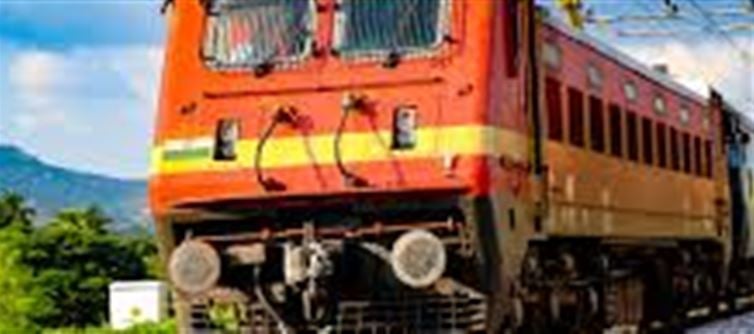
In a major push for infrastructure development, the Union Cabinet, chaired by prime minister Narendra Modi, has approved four large-scale railway projects totaling Rs 24,634 crore. These projects are set to revolutionize the railway network in Maharashtra, Madhya Pradesh, Gujarat, and Chhattisgarh by improving connectivity, enhancing efficiency, and driving economic growth in the region. The projects, which are set to be completed by 2030-31, will cover 18 districts and significantly impact millions of passengers and freight transport. Let’s dive into the details!
1. Four Mega Projects for Four States: A Comprehensive Development Plan
The four approved railway projects are multi-tracking initiatives, which aim to increase the capacity and speed of the existing railway lines, reducing congestion and improving transportation times. These projects span across 18 districts and include major rail corridors in the states of Maharashtra, Madhya Pradesh, Gujarat, and Chhattisgarh.
2. Key Benefits of the Rs 24,634 Crore Infra Push
The approval of these projects will not only enhance the region's railway infrastructure but also result in multiple benefits:
· Increased Capacity: Multi-tracking will ease traffic congestion and allow for more trains to run, catering to the growing demand for both passenger and freight transport.
· Faster Travel Time: Upgrading and expanding tracks will reduce travel time, improving the overall efficiency of the railway system.
· Boost to Regional Economy: Improved connectivity will open up new trade routes, benefit local industries, and stimulate economic growth in these states.
· Job Creation: The execution of these projects will lead to the creation of numerous jobs in construction, maintenance, and operation sectors.
· Better Passenger Comfort: With an increased number of trains and upgraded infrastructure, passengers will benefit from reduced delays, higher frequency, and better services.
3. Project Breakdown: What’s Included in the Mega Railway Push?
The projects focus on multi-tracking key railway lines in these four states. Here’s a quick look at what’s being developed:
Maharashtra
· Project Overview: Upgradation of railway lines connecting major industrial hubs.
· Impact: Faster freight movement, especially for textile and manufacturing industries in the state.
Madhya Pradesh
· Project Overview: Expansion of railway lines in key agriculture-producing regions.
· Impact: Quicker transport of agricultural produce, reducing spoilage and ensuring timely delivery to markets.
Gujarat
· Project Overview: Development of railway lines to port cities like Surat and Vadodara.
· Impact: Enhancing the efficiency of cargo handling and boosting trade and export activity.
Chhattisgarh
· Project Overview: Improvement of railway tracks in regions rich in minerals.
· Impact: More efficient transportation of coal and other minerals, which are vital for the nation’s energy and manufacturing sectors.
4. Project Timeline: Completion by 2030-31
The projects are set to be completed by 2030-31, marking a significant timeline for India’s infrastructure ambitions. The government plans to execute these projects in phases, with the groundwork and early development stages kicking off immediately.
5. National Impact: How These Projects Align with India’s Infrastructure Vision
These railway projects are part of India’s broader infrastructure vision to modernize transportation networks, encourage sustainable growth, and improve connectivity in remote regions. This Rs 24,634 crore investment reflects the government's commitment to creating a robust railway system that can accommodate future demand, cater to increased passenger and cargo traffic, and serve as the backbone of the nation’s economy.
6. Why It Matters for Everyday People: Accessibility and Convenience
For the millions of daily travelers, these upgrades will translate into:
· Reduced overcrowding and shorter waiting times.
· Improved safety and better maintenance of railway tracks.
· More reliable and timely services, reducing the overall travel hassle.
Moreover, regions that have historically been underserved by efficient transport networks will see better access to essential services, medical facilities, and job opportunities.
7. Future Implications: Beyond the Current Projects
Looking ahead, these railway upgrades are expected to lay the foundation for future development projects, such as:
· Electrification of more rail lines.
· High-speed trains connecting key metropolitan cities.
· Smart stations and better facilities for passengers.
· Expansion of dedicated freight corridors to accommodate the growing logistics industry.
The government's focus on infrastructure development is also aligned with its Make in India and Atmanirbhar Bharat initiatives, aiming to reduce dependency on imports, boost local manufacturing, and streamline logistics.
8. Final Thoughts: A Game-Changer for Regional Connectivity
The approval of these Rs 24,634 crore railway projects is a significant step toward enhancing the nation’s infrastructure and addressing the increasing demand for faster, safer, and more efficient rail travel. These projects are not just about building railway tracks; they are about creating economic opportunities, improving regional connectivity, and enhancing the quality of life for millions of people across Maharashtra, Madhya Pradesh, Gujarat, and Chhattisgarh.
With completion expected by 2030-31, these projects will be a game-changer in transforming the indian railway system and boosting the country’s economy for years to come.
Disclaimer:
The views and opinions expressed in this article are those of the author and do not necessarily reflect the official policy or position of any agency, organization, employer, or company. All information provided is for general informational purposes only. While every effort has been made to ensure accuracy, we make no representations or warranties of any kind, express or implied, about the completeness, reliability, or suitability of the information contained herein. Readers are advised to verify facts and seek professional advice where necessary. Any reliance placed on such information is strictly at the reader’s own risk.
.jpg)




 click and follow Indiaherald WhatsApp channel
click and follow Indiaherald WhatsApp channel